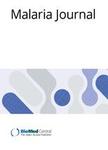版权所有:内蒙古大学图书馆 技术提供:维普资讯• 智图
内蒙古自治区呼和浩特市赛罕区大学西街235号 邮编: 010021

作者机构:Univ Alberta Dept Chem & Mat Engn Edmonton AB Canada Alberta Hlth Serv Edmonton AB Canada Univ Washington Dept Pathol Seattle WA 98195 USA Univ Washington Dept Lab Med Seattle WA 98195 USA
出 版 物:《MALARIA JOURNAL》 (疟疾杂志)
年 卷 期:2011年第10卷第1期
页 面:1-11页
核心收录:
学科分类:1004[医学-公共卫生与预防医学(可授医学、理学学位)] 1002[医学-临床医学] 1001[医学-基础医学(可授医学、理学学位)] 100201[医学-内科学(含:心血管病、血液病、呼吸系病、消化系病、内分泌与代谢病、肾病、风湿病、传染病)] 10[医学]
主 题:Malaria Probability Density Function Edge Detection Algorithm Good Initial Guess Human Reliance
摘 要:Background: Malaria is a serious infectious disease. According to the World Health Organization, it is responsible for nearly one million deaths each year. There are various techniques to diagnose malaria of which manual microscopy is considered to be the gold standard. However due to the number of steps required in manual assessment, this diagnostic method is time consuming (leading to late diagnosis) and prone to human error (leading to erroneous diagnosis), even in experienced hands. The focus of this study is to develop a robust, unsupervised and sensitive malaria screening technique with low material cost and one that has an advantage over other techniques in that it minimizes human reliance and is, therefore, more consistent in applying diagnostic criteria. Method: A method based on digital image processing of Giemsa-stained thin smear image is developed to facilitate the diagnostic process. The diagnosis procedure is divided into two parts;enumeration and identification. The image-based method presented here is designed to automate the process of enumeration and identification;with the main advantage being its ability to carry out the diagnosis in an unsupervised manner and yet have high sensitivity and thus reducing cases of false negatives. Results: The image based method is tested over more than 500 images from two independent laboratories. The aim is to distinguish between positive and negative cases of malaria using thin smear blood slide images. Due to the unsupervised nature of method it requires minimal human intervention thus speeding up the whole process of diagnosis. Overall sensitivity to capture cases of malaria is 100% and specificity ranges from 50-88% for all species of malaria parasites. Conclusion: Image based screening method will speed up the whole process of diagnosis and is more advantageous over laboratory procedures that are prone to errors and where pathological expertise is minimal. Further this method provides a consistent and robus